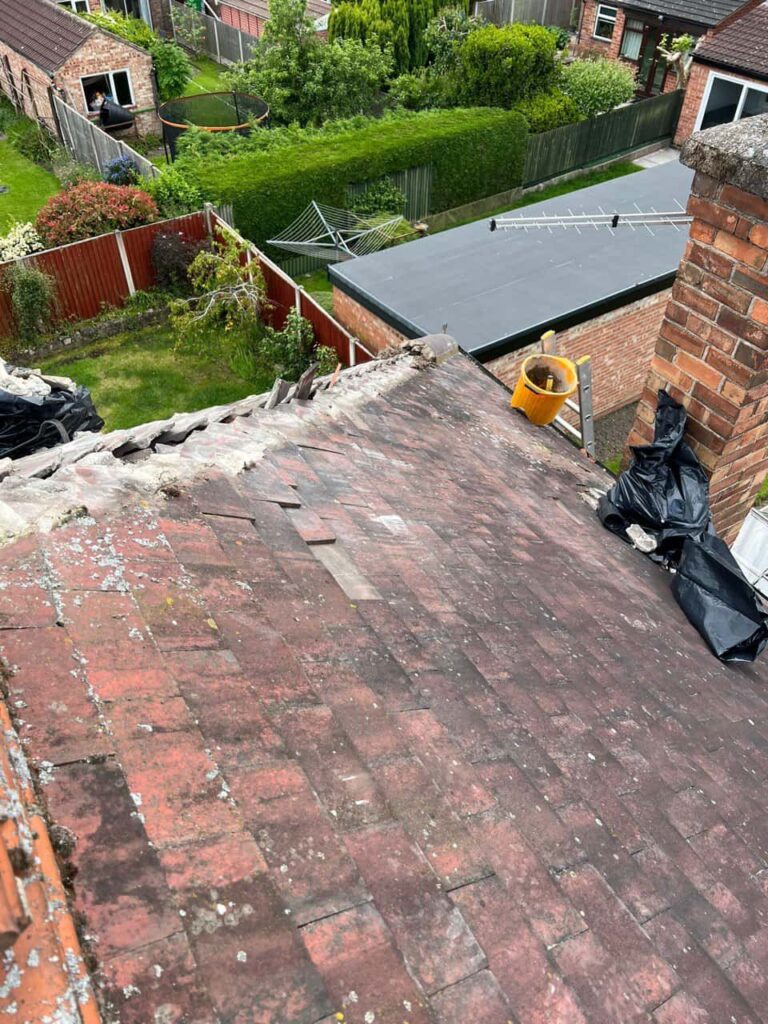A leaking roof can be one of the most frustrating problems a homeowner faces — especially when it seems to have been repaired, only to reappear after the next downpour. This common issue is not just about patching up a visible hole; it’s about understanding the deeper causes that make leaks return. At Cowplain Roofing Repairs, we help homeowners in Cowplain and across Hampshire get to the root of recurring leaks, ensuring long-term protection from the British weather.
Understanding Why Roof Leaks Reoccur
Roof leaks rarely start as major issues. They often begin with small cracks, damaged flashing, or weakened seals that go unnoticed until heavy rain exposes them. Unfortunately, if the underlying cause isn’t fully identified, even a professional repair may not prevent the problem from returning.
1. Hidden Damage Beneath the Surface
Many roof leaks stem from hidden damage that isn’t immediately visible from the outside. Underlay deterioration, rotted timbers, or compromised felt can allow water to seep in during intense rainfall. If these deeper layers aren’t repaired properly, the leak will resurface — often in the same spot.
2. Incomplete or Superficial Repairs
Sometimes, repairs focus only on the immediate symptom rather than the source of the problem. For example, resealing a cracked tile may stop a minor leak temporarily, but if the surrounding flashing or underlayment is also damaged, the issue will soon return. Proper investigation and full restoration are crucial for a lasting fix.
3. Poor Roof Design or Ageing Materials
Older roofs or poorly designed ones can struggle to handle prolonged rain. Issues such as low slopes, inadequate drainage, or worn-out materials increase the risk of water pooling or seeping beneath tiles. With each rainfall, these weak points worsen until leaks reappear.
4. Blocked Gutters and Valleys
Gutters and roof valleys are designed to channel water away efficiently. When they become blocked by leaves, moss, or debris, water backs up and seeps under the roof covering. This often leads to intermittent leaks that worsen during heavy rain. Regular maintenance from professionals like Cowplain Roofing Repairs helps prevent this common cause.
5. Damaged Flashing and Sealants
Flashing — the metal strips that seal joints and intersections on your roof — is a key defence against water penetration. Over time, flashing can loosen, crack, or rust, especially around chimneys, skylights, or vents. Once compromised, these areas become prime entry points for water, leading to recurring leaks after every storm.
6. Wind-Driven Rain
During heavy storms, wind can drive rain under roof tiles or ridge caps, even if they appear intact. Once moisture finds a way in, it can travel along beams and insulation, re-emerging inside the home days after the storm. This can make leaks seem unpredictable or unrelated to the original repair.
How to Prevent Leaks From Returning
Stopping leaks for good requires more than a quick fix. It involves proper assessment, quality materials, and consistent maintenance to ensure your roof stays watertight.
1. Schedule Professional Roof Inspections
A detailed inspection by an experienced roofer can reveal hidden weaknesses that may not be visible to the untrained eye. At Cowplain Roofing Repairs, we examine not just the surface but also the structure and drainage system to ensure the problem is resolved at its source.
2. Keep Gutters and Roof Clean
Regularly clearing your gutters and removing moss or debris helps maintain proper water flow during rain. This simple step prevents overflow and water pooling — two major causes of roof leaks.
3. Replace Damaged Flashing Promptly
Don’t ignore small gaps or rust in flashing. Replacing damaged sections ensures your roof remains sealed against water entry, especially around areas prone to leaks such as chimneys and skylights.
4. Upgrade Ageing Roof Materials
If your roof is several decades old, patch repairs may no longer be enough. New materials, such as high-quality tiles, membranes, and weatherproof coatings, provide longer-lasting protection and greater resilience against heavy rainfall.
5. Improve Roof Ventilation and Drainage
Good airflow and efficient drainage prevent moisture from building up under the surface. Ensuring that vents, valleys, and outlets are working correctly will reduce the risk of recurring leaks.
Why Heavy Rain Exposes Weak Roofs
Heavy rainfall tests every element of your roof. Even a small weakness — a loose tile, tiny gap in flashing, or poorly sealed joint — can let water in under pressure. Once water penetrates, it spreads quickly and can travel along rafters before dripping into your ceiling, making the exact source difficult to locate.
This is why leaks often seem to “reappear” only after severe weather: the force and volume of water overwhelm minor imperfections that might otherwise go unnoticed during light showers.
The Value of Preventative Maintenance
The best way to avoid recurring leaks is through prevention rather than reaction. Scheduled maintenance, particularly before and after the wet season, helps identify vulnerabilities early. Professional roofers can reinforce weak areas, replace deteriorating materials, and ensure the entire system functions as it should.
At Cowplain Roofing Repairs, we believe in taking a proactive approach to roof care. Our thorough inspections and expert workmanship ensure homeowners in Cowplain and across Hampshire enjoy long-term peace of mind, even through the heaviest downpours.
Conclusion
A roof leak that returns after heavy rain is not a coincidence — it’s a sign of an unresolved issue beneath the surface. By identifying root causes, carrying out complete repairs, and maintaining your roof properly, you can protect your home from future water damage and unnecessary expense.
Cowplain Roofing Repairs provides reliable, professional solutions for all types of roof leaks throughout Cowplain and Hampshire. With expert care and regular maintenance, you can ensure your roof remains watertight and weather-resistant for years to come.
Call us on: 023 9387 2689
Click here to find out more about Cowplain Roofing Repairs
Click here to complete our contact form and see how we can help with your roofing needs.

